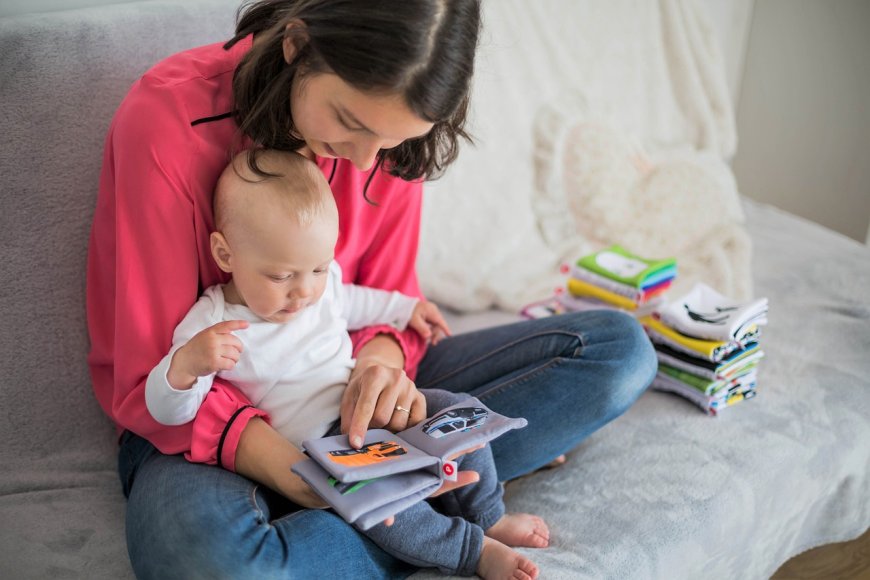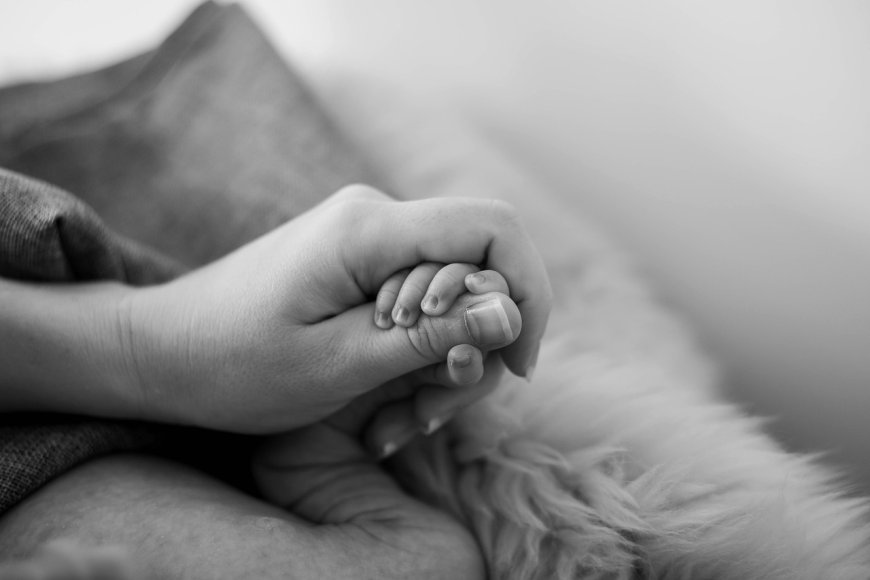ATTACHMENT THEORY
Human is a social entity. He lives a healthy life by connecting with people, interacting and building relationships with his social identity. Our first attachment object, the person we establish a relationship with, is our mother. Although it has not yet been fully proven, it is suggested that the first attachment relationship between mother and baby is established before birth (Bloom 1995).

Human is a social entity. He lives a healthy life by connecting with people, interacting and building relationships with his social identity. Our first attachment object, the person we establish a relationship with, is our mother. Although it has not yet been fully proven, it is suggested that the first attachment relationship between mother and baby is established before birth (Bloom 1995). During the prenatal period, the fetus can respond to the mother's emotions. It is reported that in the twenty-sixth week, the fetus has the ability to perceive, react and capture the information it hears (Kaplan et al. 1994, Altuğ and Özkan 1996). The primary caregiver may not always be the biological mother. Whoever gives us regular primary care during infancy usually becomes our attachment object.
Attachment theory is a theory based on understanding individual differences, the existence of people's need to establish close emotional bonds, and the universality of this need (Sümer, 2006; Bowlby, 2012; 2014). It is an approach that explains why people tend to form strong emotional bonds with others who are important to them. Attachment is an enduring emotional bond, defined as the tendency to seek and maintain closeness to a certain figure, especially in stressful situations (Bowlby, 2012). Attachment is a mutual adaptation process and develops as each member of the attachment process leaves a mark on the other (Ruppert, 2011).How the parent adapts to the child's temperament affects the child's attachment quality, and one of the situations that shapes this emotional flow between them is the relationship style between the attachment figure and the baby. This mutual emotional exchange between the mother and the baby determines the attachment dynamics and provides the groundwork for the child's future mental, emotional and social abilities (Linzdey et al., 1989; Zeanah et al., 1993; Lewis, 1995; 1999, cited in Schore, 2000; Ruppert, 2011; Masterson, 2013).
Bolwby emphasized that newborn babies and children need to establish a close relationship with their caregivers. The relationship between mother and baby becomes evident with the search for closeness (Hortaçsu 1991). Bowlby (2012) argues that there are six states of attachment:
1) Proximity protection behavior: The desire to be near the primary attachment figure.
2) Use of the mother as a resource base for exploration: When a child observes that his mother is looking at him and ready to reciprocate whenever he desires closeness to his mother, he is likely to be happy and able to explore long distances.
3) Feeling: Feels safe if the primary attachment figure is unquestionably next to him or within easy reach.
4) Approach behavior: Approaching the mother and watching her.
5) Exploratory behavior: Focusing especially on the mother figure and the intensity and continuity of paying attention to objects in the environment;
6) Withdrawal (fear) behavior: How it orients itself, especially in relation to the mother figure.

In babies, separation from the attachment figure manifests itself as illness and fatigue in later ages (Goodfriend 1993). The researcher found that in babies who were separated from their mothers immediately after birth for various reasons and taken into special care; He stated that development slowed down or stopped, these babies did not eat, experienced social withdrawal, and constantly had a sad expression on their faces (Boccio et al., 1994). They suggested that in case of separation from the primary attachment object for any reason, the baby's heart rate increases and there are differences in the functioning of neurobiological systems.
Troy (1995) emphasized that the physical bond between mother and baby is very important. Researchers have suggested that a mother's naked embrace of her baby may have a positive relationship with attachment. For this reason, contact with the mother is very important as the baby is awake and receptive in the first 45-60 minutes following birth.
Bowlby argues that the feeling of attachment and trust depends on two factors:
• Whether the attachment figure responds to calls for support and protection;
• Your self; whether he or she is seen as a person to whom other people, and especially the attachment figure, will respond in a helpful manner. In practice, they influence each other. In other words, it can be said that the attachment figure model and the self model develop by influencing each other (Bowlby, 1973; Bartholomew and Horowitz, 1991; Bowlby, 2014).
In contrast to children's instinctive behaviors such as crying, smiling, and making eye contact, various adult behaviors such as hugging the baby when it cries or speaking shrilly to it create a child's attachment to an adult (Bee and Boyd, 2009). According to attachment theorists, the attachment style, which reflects the relationship with the caregiver in the early stages of life and contains the designs of the self and others in the psychological structure, generally remains the same. It is stated that "Whether a person has established a relationship with another person and whether this relationship has supportive and protective features can be observed in every period of life and in close relationships" (Kesebir, Özdoğan Kavzoğlu and Üstündağ, 2011).
It is critical for the baby to establish a secure attachment with the primary caregiver for the later years of his life. Research shows that the attachment style developed by an individual may have a positive or negative impact on all future close relationships, and that it actually shapes the relationships he establishes. An individual's attachment style can greatly affect their romantic identity and social identity. It is suggested that the early attachment relationship is the prototype of future love relationships (Waters et al. 2002). The person reflects the attachment style he/she has built with his/her primary caregiver in his/her behaviors, emotions, and choices in the relationships he/she establishes and reveals his attachment style in his reactions to the events he experiences. Attachment patterns formed in infancy are not immutable throughout life. Since cognitions and behaviors can change, flexibility can also be provided in the structure that activates attachment.
SOURCES
• Arslan, E. and Teze, S. (2016). Attachment theory. In, N. Sargın, S. Avşaroğlu & A. Ünal (Eds.), Reflections from Education and Psychology, (pp.71-90). Konya: Strip Bookstore
• Soysal AŞ., Bodur A., İşeri E., Şenol S. Attachment Process in Infancy: A Review. J Clinical Psy. 2005; 8(2): 88-99.
What's Your Reaction?


















































































